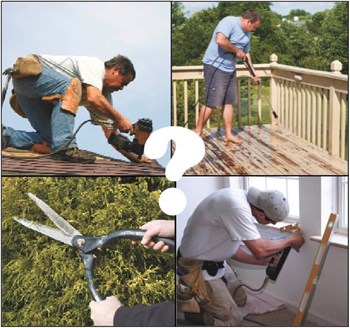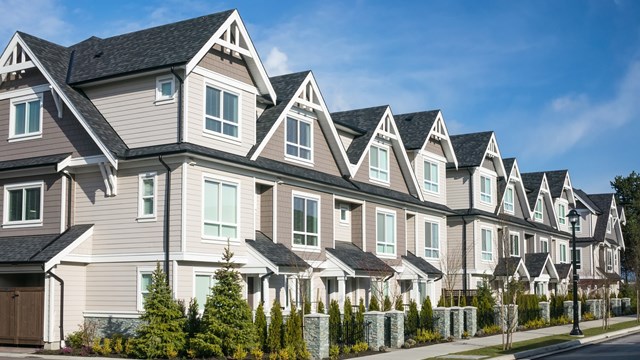
When owners move into an HOA or condo development, most have a basic idea of who’s responsible for repairs and maintenance in their unit, and who’s responsible for the common areas—even if they don’t bother to read the governing documents, which they should.
Generally, it’s understood that the unit owners are responsible for items within “the four walls,” such as the floors, walls, etc.; and the association is responsible for common areas or systems such as the clubhouse, the electrical system, the hallways, and so forth.
But what happens when some areas are in doubt, such as the windows, or a grassy area right outside the owner’s door? What elements of buildings or developments are usually considered strictly the responsibility of the administration and staff to maintain and repair? Since there are several professions involved—managers, lawyers, maintenance firms and others—there are several perspectives.
Rules of Thumb
Donald Onorato, a Hackensack attorney, says it’s important to bear in mind that each development or building’s set of bylaws is different, so there is no hard and fast rule as to which party is responsible for any specific item or element in a given community.
That being said, there are a few items that are almost always purely the jurisdiction of the HOA. These include any exterior items such as brickwork, siding and so forth. He also mentions any utility pipes or wires that run through the common areas or service units.
Alfred Ojejinmi, a chartered surveyor, past president of the Institute of Real Estate Management of New Jersey (IREM-NJ) and a regional director for the Wentworth Group management company, goes into more detail. “Traditionally, most of the time, for a high-rise, the common areas are all hallways, lobbies, trash bins, items on the roof such as cooling towers, the fire alarm system, any generators, the sprinkler system. In garden apartments, most of the time, the building staff is responsible for general compactors, the clubhouse, and all the mechanical items, including the pool systems. In a development with townhomes, the only things that bind them together are roads, streetlights, grounds, the clubhouse.”
Still, he cautions, “It all depends on the governing documents. For example, in some developments, the association is responsible for only the common lawn, in some, also the front lawns.”
Attorney Paul Leodori of the law firm of Leodori & Whelihan in Medford adds that this responsibility is also dependent on the type of ownership. In an HOA, the association has little responsibility; in a co-op, the board and management have responsibility for almost everything; and in condos the association and staff are responsible for things like the common walls, common stairwells, siding and common piping, he says.
This brings up the next question: What are unit owners responsible for as far as maintenance and repairs are concerned?
James Rademacher, the 2009 president of Community Associations Institute of New Jersey (CAI-NJ) and the CEO of Rezkom Enterprises, a maintenance and renovation company in Ocean, says, “Unit owners are generally responsible for everything from the drywall inward. In other words, they would take care of any repairs on the interior of their unit.”
These even include those water, electricity and sewer lines and fixtures that are only within the particular unit—for example, if the thread on one of your ceiling light fixtures becomes so worn out that you can’t screw a light bulb into it. If such a line, however, runs through your own and other units, that can be something else again.
Gray Areas
That brings us to the gray areas—an area about which everyone seems to have something to say. Among them could be the front sidewalk, exterior siding (especially as far as cleaning the siding is concerned), concrete decks and wooden decks, says Ojejinmi. Although we’ve mentioned roofs before, they could be a gray area, especially in townhouses.
“Most people,” says Leodori, “are surprised the unit owners have responsibilities for windows. If a window is leaking they call their association, but the associations may have governing documents that say otherwise.”
If a mechanical system, radiator system wire or a pipe serves more than one unit, this gives rise to questions. Which part of the pipe, wire, radiator system or mechanical system does the association have the responsibility for, and which part is the unit owner responsible for? Sometimes that’s a question that only gets answered after an incident has occurred or a problem has arisen.
“Many developers run the utilities through the walls and ceilings of units to get to other units,” says Rademacher. “This is a common practice, causing the association and its attorneys to determine responsibility/liability after a leak or fire has occurred.”
Yet another problem concerns insurance policies.
According to Tracy Franklin of MAMCO Management in Mount Laurel, “Many insurance policies are written in direct opposition to the documents. For example, if an upstairs condo unit has a plumbing leak and damages the downstairs unit, and the unit owner files a claim against the association’s insurance carrier, and the insurance policy isn’t a bare-walls policy, then they will cover the claim even if the association’s documents clearly state that the owner of the upstairs unit is responsible for their plumbing system.”
This type of thing, she elaborates, will put an association at risk in terms of raising insurance costs or, if too many claims are filed, of the inability to get coverage at all.
Avoiding Conflicts
All this being the case, how can associations avoid conflicts about building systems maintenance, repairs and upkeep? Of course, documents spelling out responsibility are important, but there are several answers.
On an elementary level, several of the professionals interviewed for this article recommend a simple maintenance checklist or chart put together by management or the building’s attorney. This can list the responsibility for common items like roof repair, sidewalks, windows, doors and so forth.
In the event of accidents, such as a leak, Leodori recommends sending a professional to see where the damage is coming from. This may seem obvious, but unfortunately, it’s not always as common a practice as it should be. Once a professional is involved, though, management can work with that professional to get insurance for the association or the unit owner, and “it usually makes everyone a little happier,” says Leodori.
Even so, Leodori adds that clarifying the governing documents “on too broad a basis” may sometimes be difficult—and expensive, if it becomes necessary to hire an engineer or architect to clarify aspects of the building’s construction—and the board may balk at approving such a measure.
One thing that really helps, says Leodori, is when management possesses the “as-built” plans for the building, with changes that were made as construction was under way. Many have the original architects’ plans done before construction, but those may have been changed. “If you don’t have an as-built plan, you may not even know what’s under the building,” he says.
Making Things Clearer
Unfortunately, not all condo or HOA developments’ governing documents are equally clear about who’s responsible for what. Experts interviewed for this article agree that newer developments or buildings’ documents have much clearer language on this subject than those built even a couple of decades ago.
“The oldest HOAs in New Jersey’s documents are very technical in nature—they need a lot of interpretation,” says Ojemni.
“In the old days,” says Leodori, “the focus was on ‘let’s get this built.’ They weren’t so much worried about what would happen 20 or 30 years down the road. As communities became more prevalent in New Jersey, lawyers and buildings began to recognize some of the problems, and in the mid-1980s, documents got better.”
Taking all these problems into account, how can boards and managers help owners improve the dividing line between their maintenance obligations and those of the development itself?
One way, of course, is to give unit owners a copy of the governing documents. For those moving in, this could be done as part of the welcome packet. These subjects could also be discussed at orientation meetings.
While giving people copies of their governing documents is a good policy, some areas of the state do have more catching up to do than others, Leodori adds. “Lawyers in North Jersey almost always used to close sales, but this was not necessarily true in South Jersey. So in North Jersey, they have some obligation to explain the governing documents to prospective buyers.”
Overall, says Franklin, “Repetition and education. Put articles into newsletters to let residents know. I often get calls from unit owners, realtors and/or title agents asking what type of insurance that unit owners should get, and I let them know what they are responsible for.”
She also advocates getting in touch with your local CAI (Community Associations Institute) chapter and letting them know that this would be a good topic for a seminar.
And, of course, we shouldn’t minimize the importance of a maintenance checklist, as mentioned earlier.
These issues, however, will never be totally resolved. There will always be owners complaining about leaking windows, leaking pipes, moldy roofs, broken pavements in front of their front doors and so on. But at least, if the board, management and unit owners are all familiar with the basic documents and responsibilities, discussions can proceed in a rational, productive way.
Raanan Geberer is a freelance writer and editor living in New York City.






2 Comments
Leave a Comment